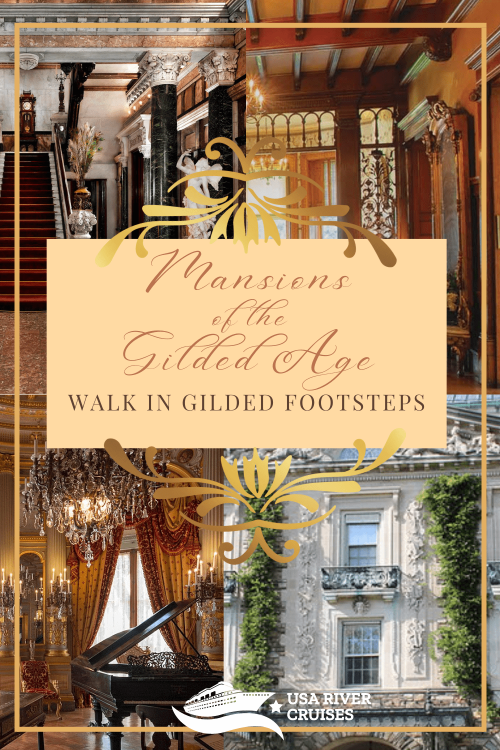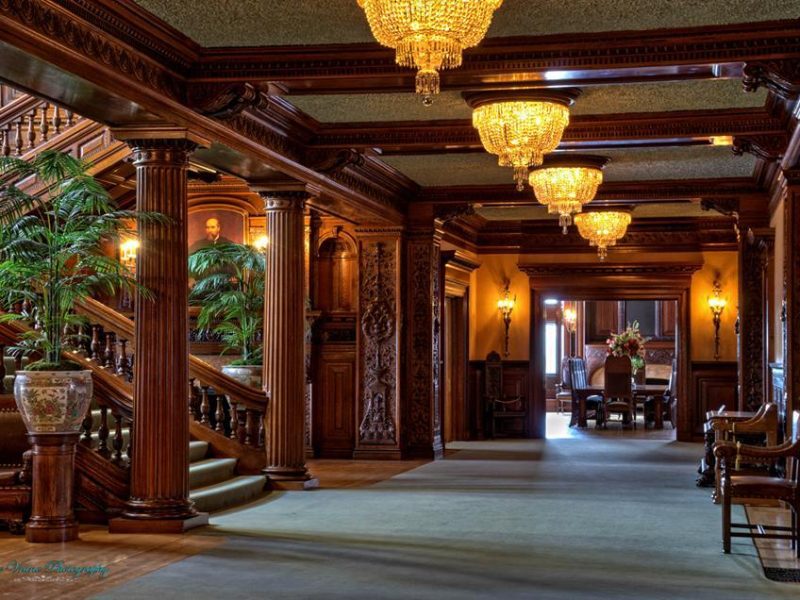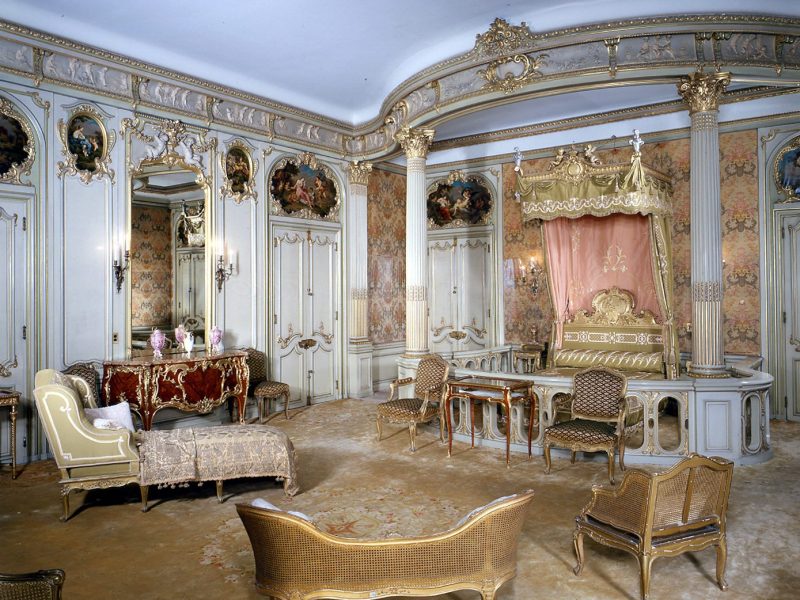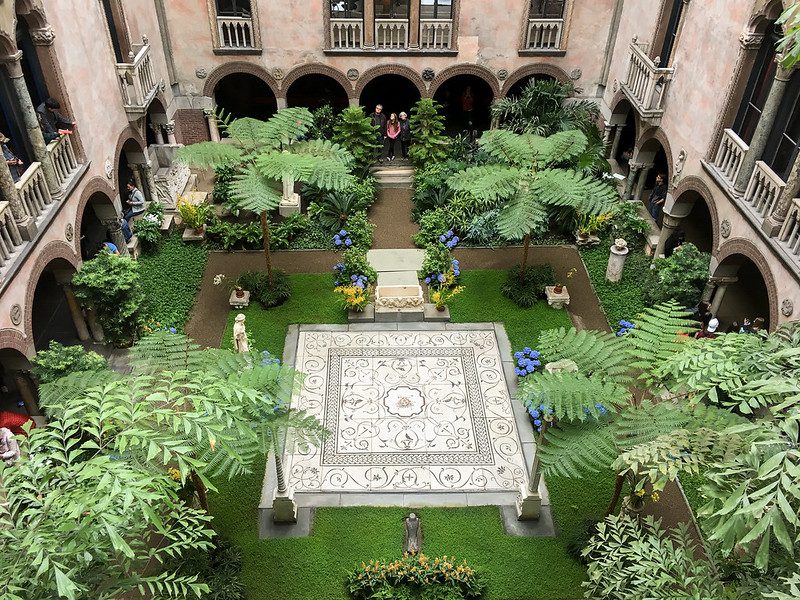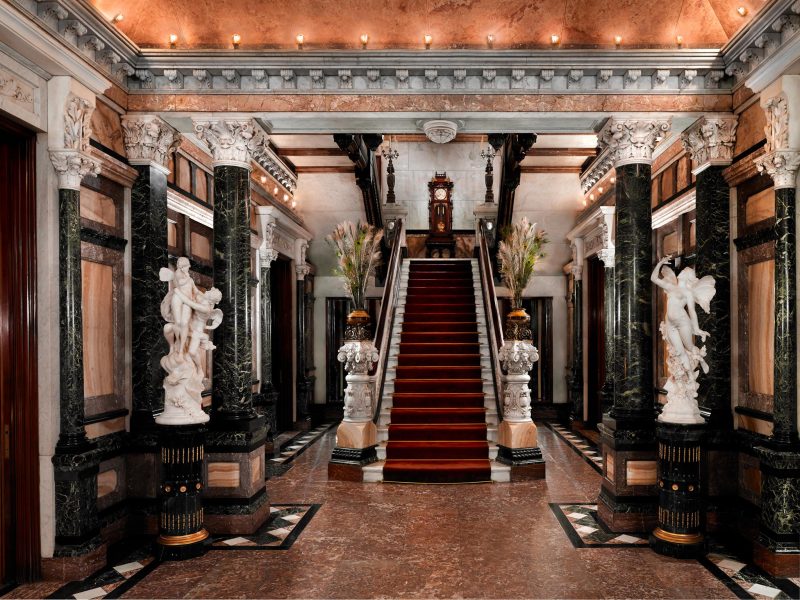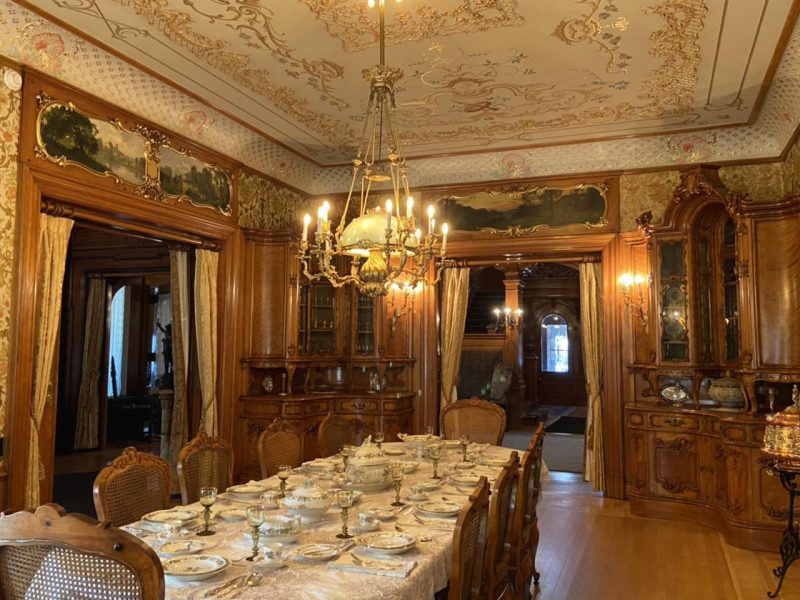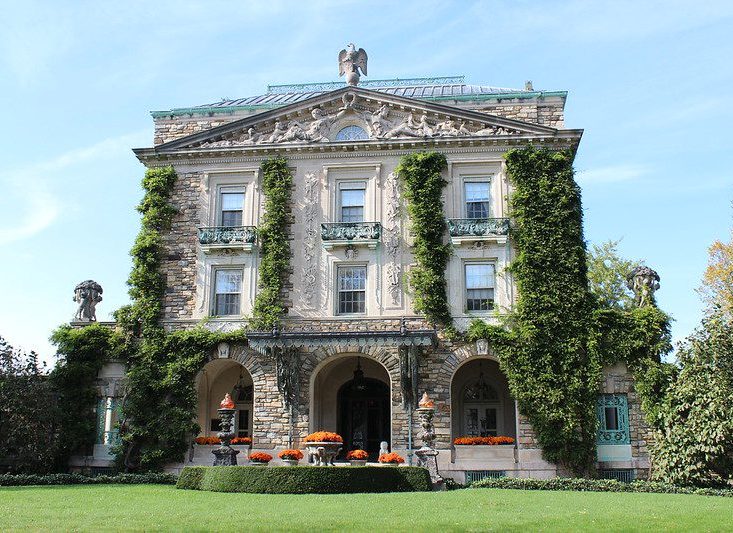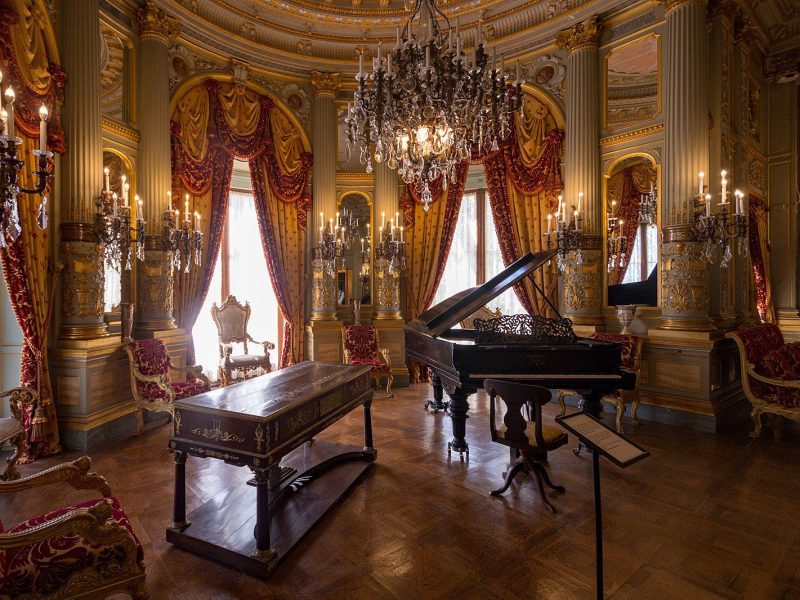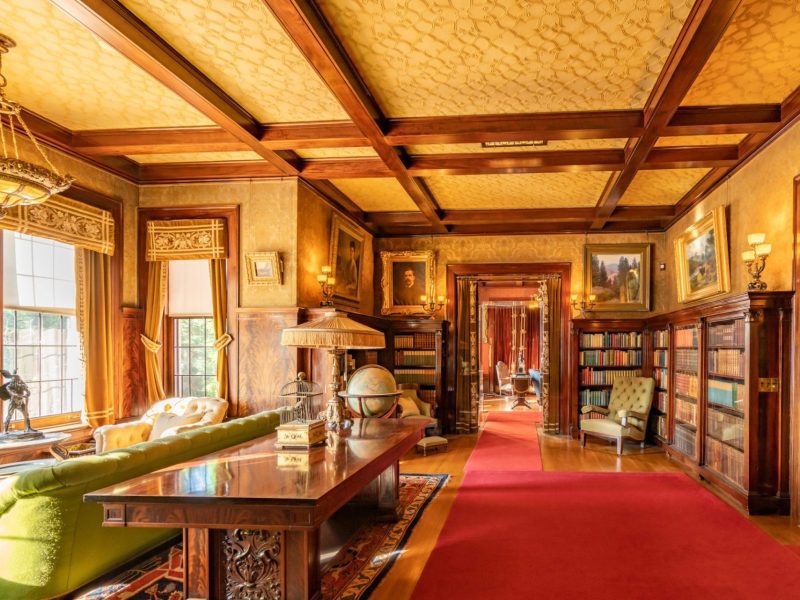
by Dawn Woolcott
Imagine the days when vast fortunes were made in the burgeoning and ever expanding American landscape. Fast money was earned and vast money was spent on lavish homes and lifestyles. Movies depicting the lifestyles of the rich and richer have always been popular, as viewers dream of a world they’ll never know.
Movies such as “The Gilded Age,” “The Philadelphia Story,” and “The Great Gatsby” all portray the lifestyle of Americans with money to burn. Many Hollywood movies have been made of others struggling to step into that world, including “How to Marry a Millionaire” or trying to escape it such as “My Man Godfrey.” There are also several excellent documentaries about the real people of the gilded age including American Experience’s “The Gilded Age” or History Channel’s “The Men Who Built America” or “Empires of Industry: Andrew Carnegie and the Age of Steel” where you can get the true story of the newly rich during this period which ran approximately 1870-1910. .
While watching movies and dreaming is fun, but there is nothing quite like walking in the footsteps of those people yourself to really get a feel for what it was like to stand at a window and look out over perfectly tended gardens, run your hand down an elaborately carved staircase, or look up at a glittering stained glass dome ceiling. While an astonishing number of homes from this era have sadly been demolished, the ones that remain are memorable to visit. Some of these magnificent homes are as glorious as the palaces in Europe, while others are just extravagantly large homes with all the “modern conveniences” of their time. They are filled with American stories of immigrants, innovators, and those who worked hard to gain their riches.They all offer a fascinating glimpse into times gone by, and all are accessible while exploring the USA on a small cruise ship.
Hyde Park, New York – Grand and opulent, the Vanderbilt Mansion is luxurious living in a quiet country home. Located in Hyde park overlooking the Hudson River, the Vanderbilt Mansion brings the Gilded Age front and center with no apologies. It is a 400 acre aristocratic estate, just one of several homes the Vanderbilts owned, and rather understated by their standards. One of the most highly decorated rooms is the dining room, where the table could seat 18 people and an extremely valuable Persian carpet was underfoot.
St. Paul, Minnesota – The James J. Hill House was once the largest home in the state. Built in 1891, at 36,500 sq ft it contained 13 bathrooms and 22 fireplaces, and a three-story pipe organ. Befitting its home in Minnesota, it has a warm and cozy feeling due to the use of wood throughout rather than stone. James Hill made his money as the builder of the Great Northern Railway. He was born in Canada to Irish immigrants, only had the use of one eye, and had to head out to seek his fortune at the age of 14. He worked in the shipping business on the Mississippi River prior to investing in railroads, which proved to be a wise decision. His home includes all the modern conveniences including discreet buttons under the dining room table to summon the maid, and an early security system built into the windows. He collected French landscape paintings and was an avid reader. He used his fortune to help others by regularly donating gifts to colleges and universities, and to victims of natural disasters.
New York City: Andrew Carnegie is one of America’s most famous names. The Scotland-born industrialist gained a vast fortune in his day and in 1902 built a mansion in New York City worthy of his name. The 64 room mansion Mansion was built in an English Georgian style. The man knew though that you can’t take it with you, and thus after selling his business, worked to give away most of his fortune through philanthropic works and the creation of a philanthropic foundation that still works today funding worthy causes. His deep love of education inspired his building over 2,000 libraries across the United States, and funding world peace projects and scientific medical discoveries including the discovery of insulin. His former home in New York City is now home to the Cooper Hewitt Design Museum.
“To try to make the world in some way better than you found it is to have a noble motive in life.”
Andrew Carnegie
Boston – The Isabella Stewart Gardner Mansion was purposely built in1897 to showcase a vast collection of art works. Inspired by a trip to Venice, newly rich Isabella Stewart Gardner put her inheritance towards creating a stunning museum. Known for its elegant architecture, where the outside gardens and courtyard plantings are just as important works of art as those that hang inside.
Chicago – The Samuel Mayo Nickerson Mansion is now the Richard Driehaus Museum, named for the man who sponsored its restoration to house his art collection. The home has a long association with Chicago’s art world. It was built in 1883 by Samual Nickerson, the founder of the Art Institute of Chicago. He and his wife were very active in the art community and regularly hosted artists. They even had their own art gallery built into the design of the house, which was later altered to include a stunning stained glass dome as crown jewel to showcase art displays.
Bar Harbor, Maine – The La Rochelle Mansion was built in 1903 for the George Bowdoin family. The lavish chateau sits on just two acres, but has 41 rooms and 12 bedrooms. The financier was the great-grandson of Alexander Hamilton, whose French heritage was the inspiration behind the mansion’s name. Later, the house was sold to the man whose father-in-law invented condensed soup and founded Campbell’s Soup Co. Now owned by the local Historical Society, the home is open for visitors.
Sleepy Hollow, New York – Another name synonymous with wealth during the gilded age is Rockefeller. While most of his workdays were spent in New York City, he built a lavish “summer” home up the Hudson River on a beautiful piece of land overlooking the valley below. They named the estate Kykuit,, which is Dutch for “Lookout.” And what a lookout view they had. Completed in 1915, the Rockefellers who amassed their fortune mainly in oil, kept the house in the family for three generations. Their collection of artwork is astounding and includes works by greats such as Toulouse Lautrec, Picasso, Marc Chagall, Andy Warhol, Henri Matisse, and Jackson Pollock. The stunning home is just one of several elaborate homes in the area.
Milwaukee, Wisconsin – One of America’s great immigrant stories, Pabst’s family moved to America from Germany in 1848. He worked as a side-winder ship captain, married the daughter of a brewery owner in Milwaukee, and became part of the growing beer industry. The Pabst Mansion is found in downtown Milwaukee, completed in 1892. Avid art collectors, they filled the house with children as well as art. Following their deaths, the house was eventually sold in 1908 to the Catholic church where it remained for 67 years. Rescued from demolition in 1975, it is now fully restored and a beloved part of Milwaukee’s heritage.
St. Louis, Missouri – The historic Sam Cupples House was built in 1890 by a man who began amassing his fortune by selling wood utensils. He was not born rich, but eventually was able to build a house with 42 rooms, 22 fireplaces, and an eclectic collection of furnishings. He was a strict Methodist of Irish descent and did not believe in dancing, thus his large home does not contain a ballroom,which was a must-have room in most mansions at the time. He died in 1912 and although in his will he specified the house could not be sold for 8 years following his death and NOT to St. Louis University, it was sold to the American Railroad Telegraphers Union who did eventually sell it to St. Louis University in 1946. The mansion is now home to a museum and decorative arts gallery.
Hannibal, Missouri – Rockcliffe Mansion was built between 1898-1900 in the Georgian Revival style. It sits high above the world below, overlooking the Mississippi River on the edge of a cliff. The man who built the house was John Cruickshank, who earned his money in lumber. He and his family lived in the house for 20 years. Following his death, it was vacated and sat empty for over over 40 years. Just two weeks before demolition was to begin, the home was rescued by a group who chose restoration over removal. The house with 30 rooms is open for guided tours, although some rooms are set aside as a boutique bed and breakfast to help fund restoration.
Duluth, Minnesota – Glensheen Mansion was built towards the end of the gilded age and doesn’t have that marble and gold ambience found in some mansions, although at 27,000 sq ft, it is not a mere country cottage. This more comfortable home was built in 1908 for the Congdon family, who earned their money through iron mining. Built on the shores of Lake Superior, the 22 acre property offers waterfront views and lovely gardens. As it was built on a heavily wooded site, the house has several unique features including 16” thick ceilings filled with fire retardant tiles. One aspect of Glensheen that is fascinating is that the contents of the home are all original to the family who lived there.
Newport, Rhode Island – No list of gilded age mansions would be complete without including the top-of-the-line, over-the-top mansions that inspired the term “gilded.” These homes are the ultimate “must-have” address of the gilded age and have been used as sets for movies of that period. While you may have heard of “The Breakers,” there are actually many mansions in a relatively small area and several are open to visitors. Choosing just one to visit is difficult, as they are all lovely. You can take a peak at all of these homes, many run now by the Newport Preservation Society.
If you’d like to visit any of these cities and experience a gilded era mansion yourself, give us a call! We can help you discover these holders of the American Dream.
All 5 Great Lakes – Victory II
Chicago to Toronto
- 10 Nights
- May 2, 2025,May 11, 2025,May 20, 2025--
11 more dates available. - From $6,299
- Victory II
- New Itinerary for 2025! Pricing Includes Inaugural Savings of $2000 off Per Stateroom!!
Undiscovered Great Lakes
Thunder Bay to Milwaukee
- 7 Nights
- June 2, 2025,July 1, 2025,September 8, 2025
- From $6,995
- Viking Octantis
Hudson River Fall Foliage – American Independence
Roundtrip New York City
- 7 Nights
- October 6, 2025,October 13, 2025,October 20, 2025--
1 more date available. - From $5,870
- American Independence
Save this story to Pinterest for future reference
